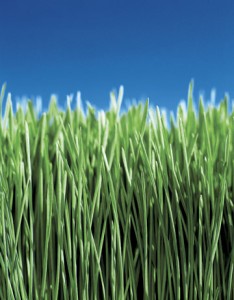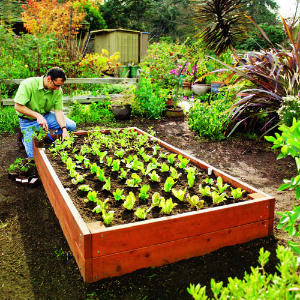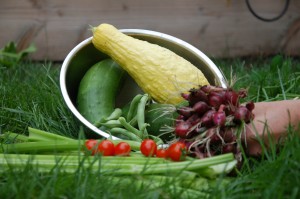I thought it would be fun to keep track of everything we harvest from our garden this summer so I created this printable for us to use. Feel free to print and use with your kids, too!
Posted at Small Footprint Fridays
Simply Natural Living
I thought it would be fun to keep track of everything we harvest from our garden this summer so I created this printable for us to use. Feel free to print and use with your kids, too!
Posted at Small Footprint Fridays
I finally feel like we’ve moved successfully from conventional products to eco-friendly products in our lawn and garden. The icing on the cake was finding a safe way to control our weeds:
So the good news is that you don’t need a big bottle of Roundup to kill weeds particularly because I’m not convinced on any level that Roundup is safe. For example, scientists in France evaluated the toxicity of Roundup on fetal umbilical cord cells. They found that every formulation of Roundup caused total cell death within 24 hours. And they weren’t even testing with agricultural levels of Roundup, they were using levels that would be found in food or feed. Roundup has also been linked to non-Hodgkin’s lymphoma. If you think you are safe using it in your yard, did you know that it’s half-life is at least 47 days? It also contaminates surface waters and is not readily broken down by sunlight or water. Scary stuff, just say no. Promise you, EcoSmart works just as well. If I get one reader to stop using Roundup, I’ll feel better 🙂

A couple years ago we ditched the Round Up and chemical filled fertilizer for more eco-friendly alternatives. It has taken some time to figure out how to maintain our lawn without chemicals but this summer we’ve found some great methods that are doing the job. I know it would be more eco-friendly not to have a lawn at all but we have two young children who love to run barefoot through it. It doesn’t take any more effort than conventional methods to have a safer, eco-friendly lawn.
Using these methods, we’ve saved money on our water bills and have a safe lawn that I feel totally comfortable having my children play on. For more tips, I highly recommend checking out SafeLawns.org.
Check in tomorrow for tips to keep your garden beds organic AND weed-free!
This is part of the Healthy Child Blog Carnival – an effort by Healthy Child Healthy World to help inspire a movement to protect children from harmful chemicals. For great posts from other green mamas, check some of them out!
 Spring is slowing making its way through the Northwest and I’m getting excited to plant my vegetable garden. Depending on where you live and what you are planting, you may have already started planting. I generally plant starts so I likely won’t plant anything for another couple weeks. Last year, I didn’t get anything in the ground until the end of May (which was a little late) but I ended up having a great garden anyway!
Spring is slowing making its way through the Northwest and I’m getting excited to plant my vegetable garden. Depending on where you live and what you are planting, you may have already started planting. I generally plant starts so I likely won’t plant anything for another couple weeks. Last year, I didn’t get anything in the ground until the end of May (which was a little late) but I ended up having a great garden anyway!
If you’ve never had a vegetable garden, I highly recommend that you start one this summer – it’s easy and a great project to do with your kids.
CONTAINER AND LOCATION
It can be as easy as using a pot for one tomato plant or you can buy or build raised beds. The first summer that I grew anything, it was one tomato plant in a pot . The next summer, my husband built me a raised bed for Mother’s Day. Raised beds can be as small or large as you have space for. Ours is long and narrow – 3 x 11 – between the edge of our grass and the fence. Often, the container where you keep your vegetables will be highly influenced by the location you have available with LOTS of sun – preferably 6-8 hours a day.
SOIL
Once you choose a container and location, start with some great soil. We have a compost bin that we stock all year just to use when planting our vegetable garden. If you don’t have a compost bin, you can purchase compost and/or soil mixes to use.
CHOOSING VEGETABLES
One of my favorite things about my garden is experimenting. I am NOT a gardener and I don’t have a green thumb. I just try new things each year to figure out what works and what doesn’t. The first summer I learned that we eat way more cherry tomatoes than plum tomatoes. Last summer I planted more celery than we could eat. I couldn’t give away all the jalapeno peppers we had and I planted beans and peas way too late to get anything out of them. When choosing vegetables to plant, choose ones that you and your kids will eat. Tomatoes, cucumbers, and zucchini are all easy to grow and you’ll get LOTS of them – with just one plant. Talk to the growers at the local nursery or farmer’s market – they are a wealth of information about the different varities of every vegetable.
 WATER
WATER
I tend to kill anything that isn’t automatically watered so we put a drip system in our raised bed. It was inexpensive and easy to hook up through our automatic watering system. You could also use a soaker hose or just get out there and manually water every day.
For additional resources on planning your vegetable garden, check out Martha Stewart’s Vegetable Garden Guide or Better Homes and Gardens Edible Gardening Guide.
You often see vinegar used in DIY cleaning solutions but vinegar is an amazing product that can be used in many more applications than cleaning and it’s so inexpensive – try out a few of my favorite uses
For many more tips, visit The Vinegar Institute ( yes, one exists ) for their Vinegar Tips and Tricks Guide or VinegarTips.com for 1001 vinegar tips and tricks.
Vinegar is so versatile – what are YOUR tips for using it?
Copyright © 2024 · Prose on Genesis Framework · WordPress · Log in